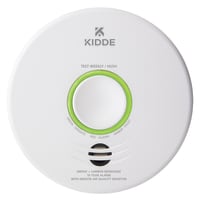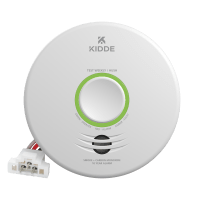What to Look For in an Alarm
We recommend choosing CO detectors that have the most accurate sensing technology available. CO alarms are designed to alert you when carbon monoxide levels have begun to accumulate over a period of time, and should sound before most people experience any CO poisoning symptoms. The more accurate the alarm, the greater chance you and your family have of responding appropriately to the problem.
Below are key features to look for when purchasing a CO alarm.
Electrochemical sensor: Alarms with electrochemical sensors are more stable during humidity and temperature changes and resist reacting to common household chemicals that may cause false readings.
End-of-life warning: This feature alerts users when it’s time to replace the alarm.
UL or CSA Listed: CO alarms should meet the strict third-party standards set by Underwriters Laboratories (UL) or Canadian Standards Association (CSA). A UL Listed or CSA Listed label should be printed on the product’s packaging. Kidde is the only major manufacturer whose CO alarms currently meet the strict standards set forth by both UL and CSA.
Accuracy: Look for a statement on the package about the alarm’s accuracy level. If the CO alarm is UL Listed, then the accuracy statement will have been certified by UL, too.
Plug-in with Battery Backup: Easy to plug into any electrical socket, these alarms are powered primarily by your home’s AC power. They also include replaceable batteries for detection during short-term power outages.
Battery-Operated: Consumers who live in areas prone to power outages or who own a gas-powered generator should consider a battery-powered CO alarm with a backlit digital display. Battery-powered units offer reliable CO monitoring when power is interrupted. The backlit digital display allows the user to view the CO level in the dark. A portable alarm can also be placed on a shelf or wall or moved from room to room.
Digital Display: A digital display screen clearly shows the level of CO detected in the home and updates the reading every 15 seconds.
Peak-Level Memory: This feature records the highest level of CO present. Knowing the CO level in the home can help emergency personnel determine correct treatment procedures depending on exposure.
Voice Warning: This feature clearly announces the threat present in the home, in addition to emitting the traditional alarm beep. It is often a feature of combination smoke/CO alarms.
To help protect your home and family, it’s important to properly install, maintain, and replace carbon monoxide alarms. Follow Kidde’s product user manuals or contact the Kidde customer service team with questions.






